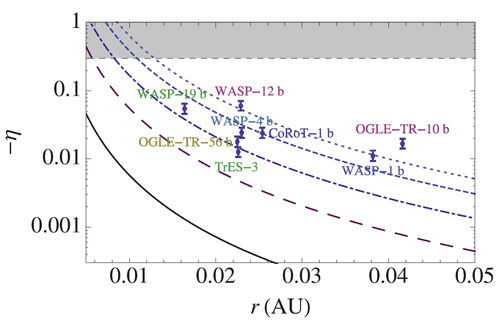- Details
- Published on 22 February 2011
Vol. 528
In section 10. Planets and planetary systems
Distorted, non-spherical transiting planets: impact on the transit depth and on the radius determination

Many transiting giant exoplanets have been found to be larger than what standard theory predicts. Now, Leconte et al. show that the problem is (slightly) worse: because of the tidal distortion by the star, close-in planets should be elongated along the axis that faces the star. During transits, it is thus the smallest cross-section of the planet that should pass in front of the star, implying that the measured radii are underestimated. The effect is small (1% or less) for most of the known transiting planets, but it can reach 3% for the very close-in WASP-12, i.e., a 6% change in the relative transit depth variation compared to an undistortedplanet, as shown in the figure below. Beyond that, the possibility of measuring these tidal distortions with exquisite transit lightcurves should open new ways of studying these panets.


